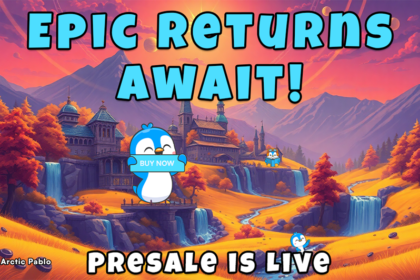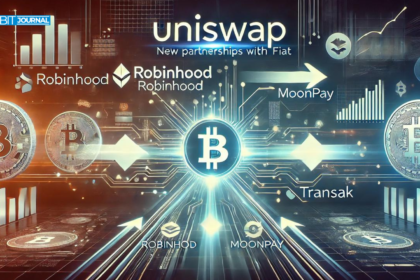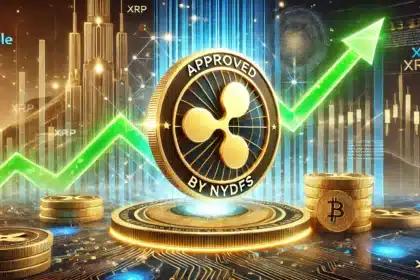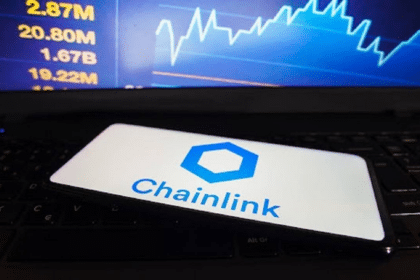Ripple’s RLUSD stablecoin; recently launched, has exceeded the $100 million in circulation in less than two months since its release on December 2024. With its dual-chain architecture that encompasses Ethereum and XRP Ledger, RLUSD sets out to radically change cross-border payments and decentralized finance (DeFi) integration. Despite rapid growth; however, critical issues on ownership concentration and cross-chain distribution pose critical questions for the long-term sustainability of the project.

What is RLUSD: A Ripple Endeavour for a Dollar-Pegged Stablecoin?
Introduced in late 2024 by Ripple Labs; RLUSD was conceived as a US dollar-backed stablecoin that will serve as a bridge between traditional finance and decentralized finance (DeFi). In addition, its stablecoin architecture permits:
- Faster Cross-Border Transactions: Utilizing Ripple’s XRP Ledger for speedy settlements at very low costs.
- Integration into DeFi: Supporting lending; staking; and yield farming initiatives.
- Regulatory Compliance: It seeks transparency and legal compliance, unlike algorithmic stablecoins.
The launch of RLUSD fits into Ripple’s broader vision of becoming a leader in regulated digital assets, working in the league of Tether (USDT), USD Coin (USDC); and PayPal USD (PYUSD).
Nevertheless; for the success of the RLUSD, much will depend on achieving wide adoption- beyond Ethereum and particularly on the XRP Ledger.
RLUSD Supply Reaches 108M Tokens, Mostly Transacted on Ethereum
As of February 12, 2025; the RLUSD total supply has greatly increased to 108.66 million tokens, a 51% increase since late December, based on available data..
Distribution Information of the RLUSD Among Cross-Chain Blockchains:
– 83.33 million RLUSD tokens on Ethereum with 1,451 wallets holding that asset.
– 24.67 million RLUSD tokens on the XRP Ledger, extremely low compared to the token amount supply on Ethereum.
– RLUSD recorded 5,267 transfers on Ethereum; showing some growth though still at an early stage of adoption.
– The top 100 wallets hold 99.88% of RLUSD on Ethereum, which indicates high ownership concentration.
This data indicates that the Ethereum ecosystem remains the dominant network for stablecoin liquidity, but this raises questions regarding the cross-chain parity and adoption of RLUSD on the XRP Ledger.

Issues Facing RLUSD
Yet, with the milestone RLUSD gets, analysts put forth two primary concerns that could weigh heavily on the growth of RLUSD:
1. High Concentration of Ownership: Data supplied by the Ripple Stablecoin Tracker reveals:
– The top 100 RLUSD wallets hold 99.88 percent of the total supply on Ethereum.
– Just 1,451 Ethereum addresses currently hold RLUSD, indicating a certain amount of distribution.
Wider distributions could be run as this would be an important imposition on the issues of decentralization and manipulation of the market.
2. Lack of Adoption on XRP Ledger
Besides the anticipation that RLUSD would lead to increased adoption of XRP Ledger, it’s fair to say that Ethereum has been the more active network for stablecoin transactions. Some of the reasons for this could be:
– There’s liquid DeFi on Ethereum and less for traders and institutions.
– Relatively low on-DeFi infrastructure on the XRP Ledger, which may dilute use cases for RLUSD.
– Network effects predominating Ethereum since it already hosts USDT, USDC, and DAI.
If Ripple wants RLUSD to compete with leading stablecoins, it must focus on driving the adoption of the XRP Ledger and expanding real-world applications.

What’s Next for RLUSD? Key Developments to Watch
Ripple has revealed new plans to promote the use of RLUSD on XRP Ledger via the following: Partnerships with payment players that will lead to real-world adoption; DeFi incentives, such as staking rewards, to encourage liquidity; and onboarding Institutional, targeting banks and financial institutions.
The evolving stablecoin regulation presents yet another major hurdle: through legal frameworks, for Ripple to navigate and ensure RLUSD compliance in the relevant markets such as the U.S., the EU, and Asia.
As such, some analysts sometimes speculate that RLUSD might fit into Ripple’s ODL product and penetrate international payments and, hence, institutional uptake.
Conclusion
Ripple’s RLUSD stablecoin surpassing $100 million in circulation highlights growing adoption and strong market demand. However, there are other hurdles such as high ownership concentration and limited XRP Ledger adoption that must be surmounted.
If Ripple succeeds in propelling RLUSD’s concrete utilities and increasing cross-chain liquidity, it could very well get the upper hand against its large competitors in the field, namely USDT, and USDC. The next few months will prove to be decisive in determining RLUSD’s success in the long run.
The BIT Journal is available around the clock, providing you with updated information about the state of the crypto world. Follow us on Twitter and LinkedIn, and join our Telegram channel.
FAQs
1. What is RLUSD?
The RLUSD is Ripple’s dollar-structured stablecoin and was launched in December, 2024 for fast, low-cost transactions across Ethereum and XRP-Ledger.
2. What is the current circulation of RLUSD?
The RLUSD, by February 12, 2025, had 108.66 million tokens in circulation, among which 83.33 million are on Ethereum and 24.67 million on XRP Ledger.
3. Why so high adoption for RLUSD on Ethereum compared to XRP Ledger?
Naturally, with greater liquidity and DeFi activity, Ethereum is the preferred network for stablecoin trading. Adoption of XRP Ledger is still considerably low.
4. What can RLUSD do and how does that differ from USDT and USDC?
RLUSD is new to the market and intends to compete with Tether (USDT) and USD Coin (USDC) by offering a fast cross-border payment and regulatory-compliant jurisdiction.
5. What does RLUSD have as challenges?
– High ownership concentration- the top 100 wallets own 99.88% of supply.
– Adoption on XRP Ledger is very limited, raising concerns about cross-chain parity.
Glossary
Stablecoin — A cryptocurrency pegged to a stable asset like the US dollar.
DeFi (Decentralized Finance) — Blockchain-based financial services without intermediaries.
Cross-Chain Parity — Equal adoption and usability of a token across multiple blockchains.
On-Demand Liquidity (ODL) — Ripple’s cross-border payments solution using XRP.
Market Liquidity — The ability to buy or sell an asset without affecting its price significantly.





























